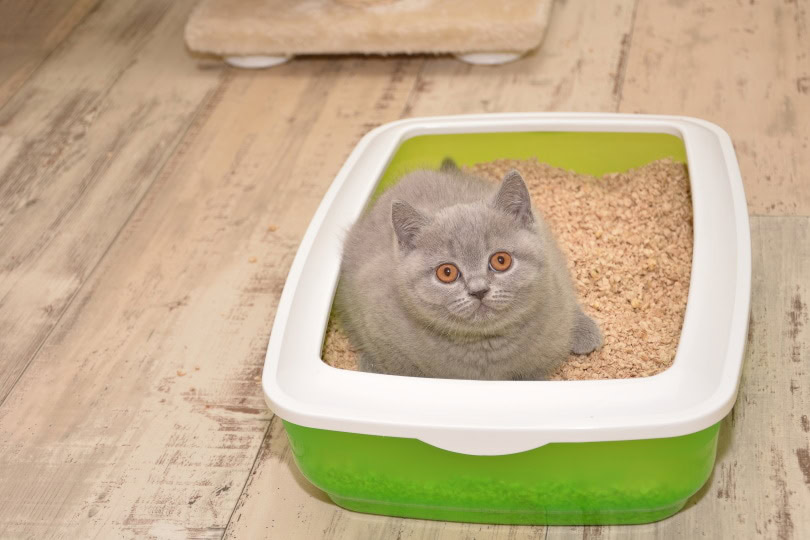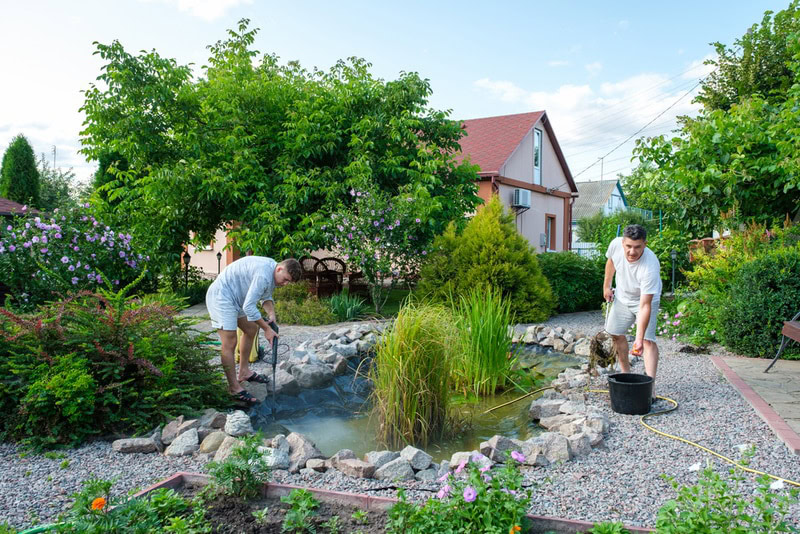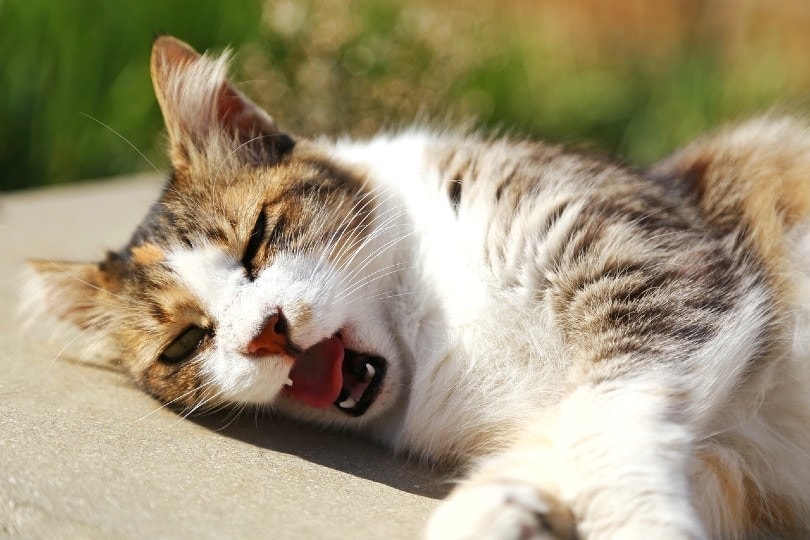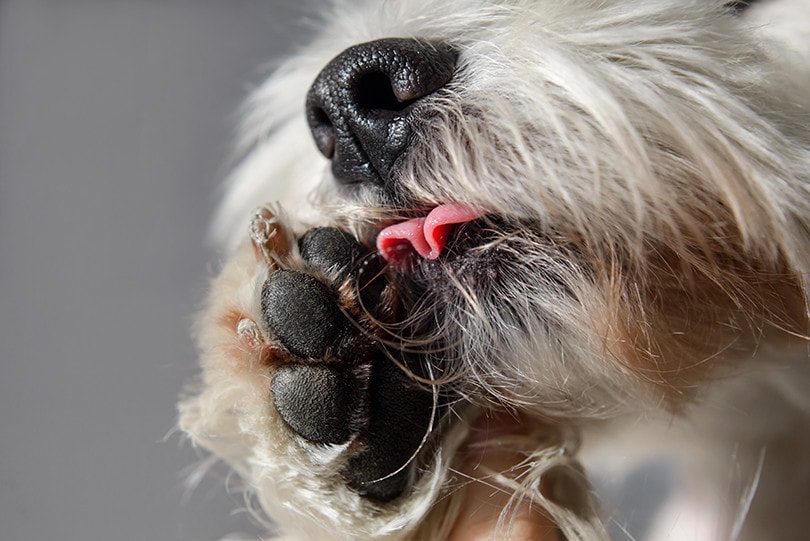VET APPROVED

The information is current and up-to-date in accordance with the latest veterinarian research.
Learn more »If you are new to owning a cat, you are probably amazed at all of the different types of litter and might be struggling to find the best one for your cat. Many people also want to learn about the different options available to be able to choose what suits their cats and their homes best. If this sounds like your situation and you need help understanding the different types of litter, you’ve come to the right place. We’ve made a list of all the different types you can find, and we are going to tell you more about them to help you make an informed decision.
 The 9 Types of Cat Litter
The 9 Types of Cat Litter
1. Clay Cat Litter
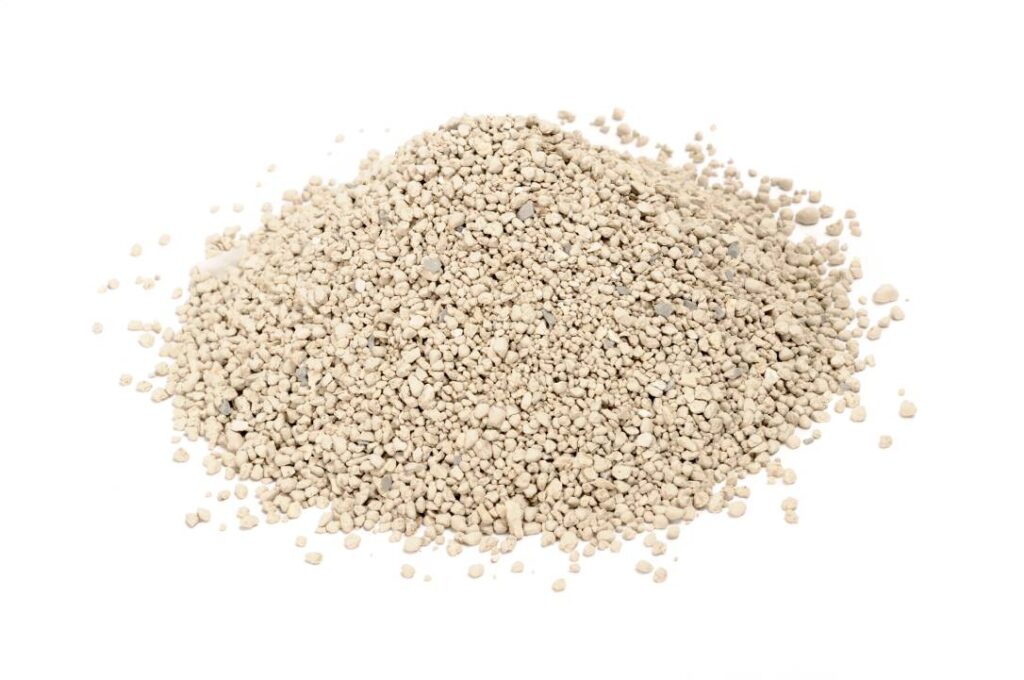
Clay is by far one of the most popular types of litter, and you can find it anywhere you can buy cat supplies. There are hundreds of brands to fit any budget, and you can get it scented or unscented, clumping or non-clumping. Clay is naturally occurring and readily available, so it makes a great litter. The downside is that it is dusty, and some brands will leave a film on everything in the room.
We recommend using a brand that specifies its low dust, especially if your cat uses a covered litter box where the dust can get trapped. Generally speaking, dusty cat litter should be avoided in cats with respiratory issues since these particles can be inhaled. We also prefer clumping clay litter because it’s much easier to clean and traps odors better than non-clumping litter.
No matter what kind of litter you use, bad smells often linger. That's where an effective litter additive like Hepper's Advanced Bio-Enzyme Cat Litter Deodorizer can make a big difference.
- Bio Enzymatic Cat Litter Freshener - Smart formulation uses natural ingredients eliminating cat...
- Save Money - Stuff for cats isn’t the cheapest. With this litter box odor eliminator, you’ll...
- Every Litter, Every Surface - Are you afraid this additive won’t work on your litter? Fear not!...
This biodegradable deodorizer is fragrance-free and safe for all ages of cats and types of litter. It uses bio-enzymes to naturally get rid of odors and help your litter last longer.
At PangoVet, we've admired Hepper for many years, and decided to take a controlling ownership interest so that we could benefit from the outstanding designs of this cool company!
2. Walnut Cat Litter
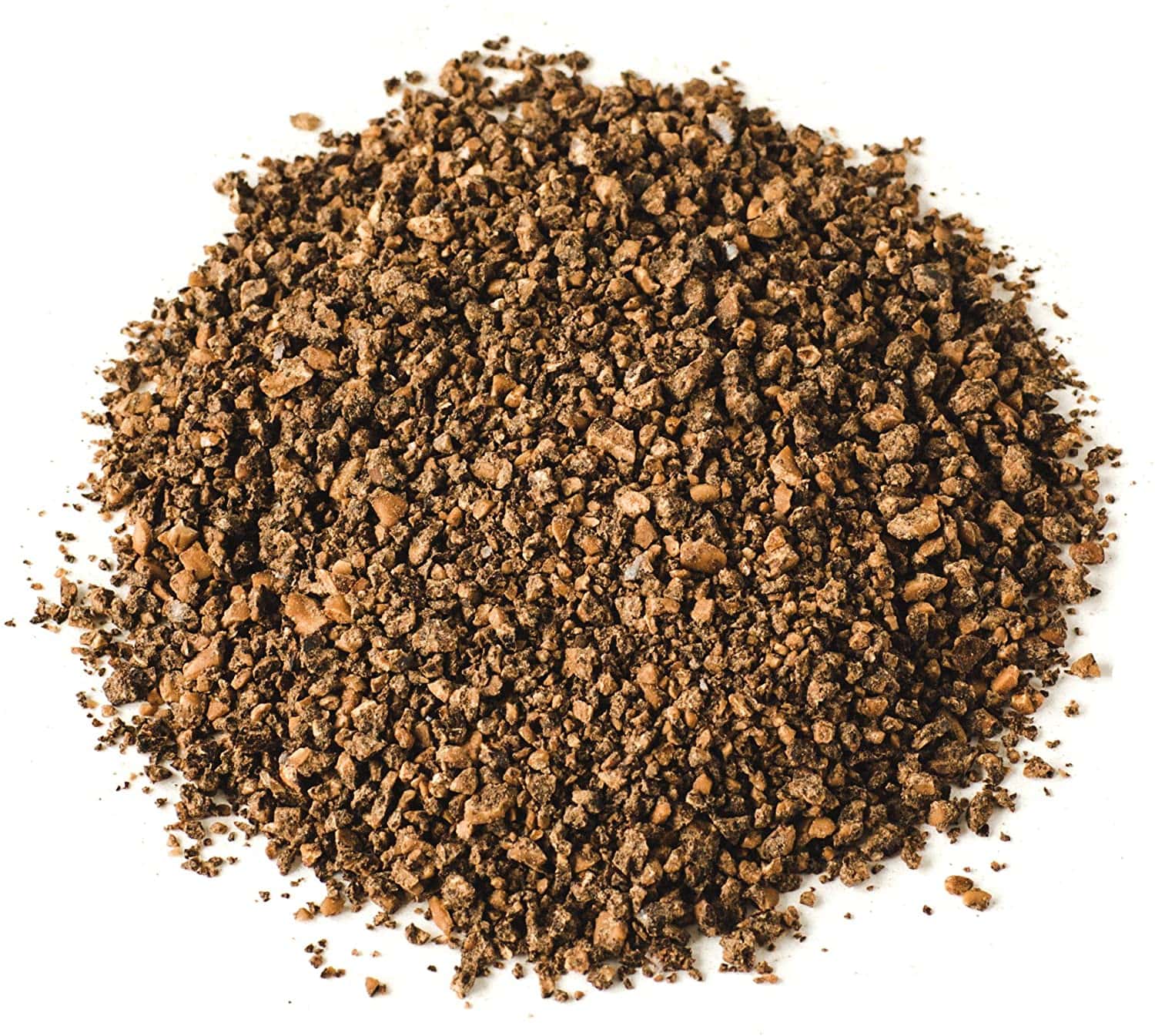
Walnut litter is a great alternative to clay that has little dust. As you may have guessed, walnut litter is the crushed shells of walnuts. It’s highly absorbent and biodegradable, so it’s good for the environment. Walnut litter is soft on your cat’s paws and doesn’t track as much around your home. The downside to walnut is that it’s non-clumping, which means you need to stir it frequently to make sure the walnut shells can completely absorb the urine, and if the urine sits at the bottom too long, it can start to smell bad. Walnut litter also tends to be dark in color, making it hard to find the little gifts our cat leaves to scoop them out.
3. Tofu Cat Litter
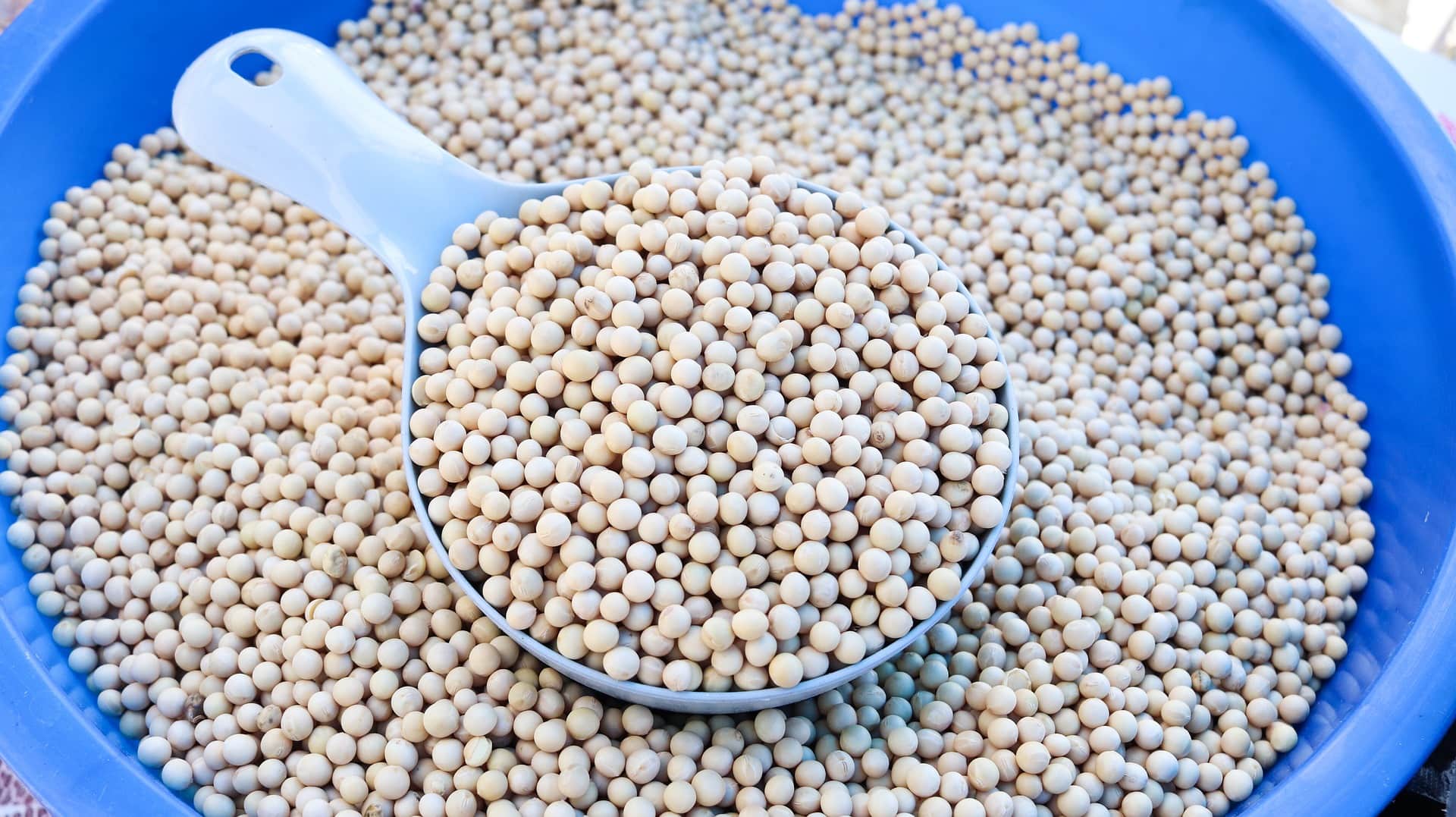
Tofu is one of the newer alternatives to clay litter that you can purchase. It’s a clumping litter, so it’s easy to scoop clean, and the clumping helps to reduce odors. It’s a bit more expensive than many of the other options. It is biodegradable and plant-based, and it’s a good alternative to clay if you need dust-free clumping litter.
4. Silica Gel Litter
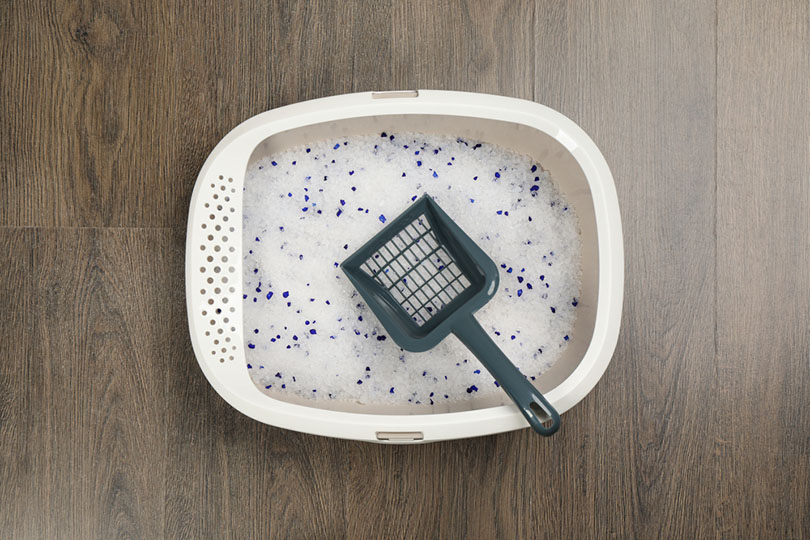
Silica gel is a type of litter that has become quite popular. Silica gel is a highly absorbent material that can quickly absorb and hold any moisture it comes in contact with, so it does a good job of absorbing moisture and reducing odor despite being a non-clumping litter. The downside to silica gel is that you need to mix it frequently to distribute the urine so it absorbs better, it is prone to tracking, and might be a bit more expensive than others.
5. Diatomaceous Earth Cat Litters
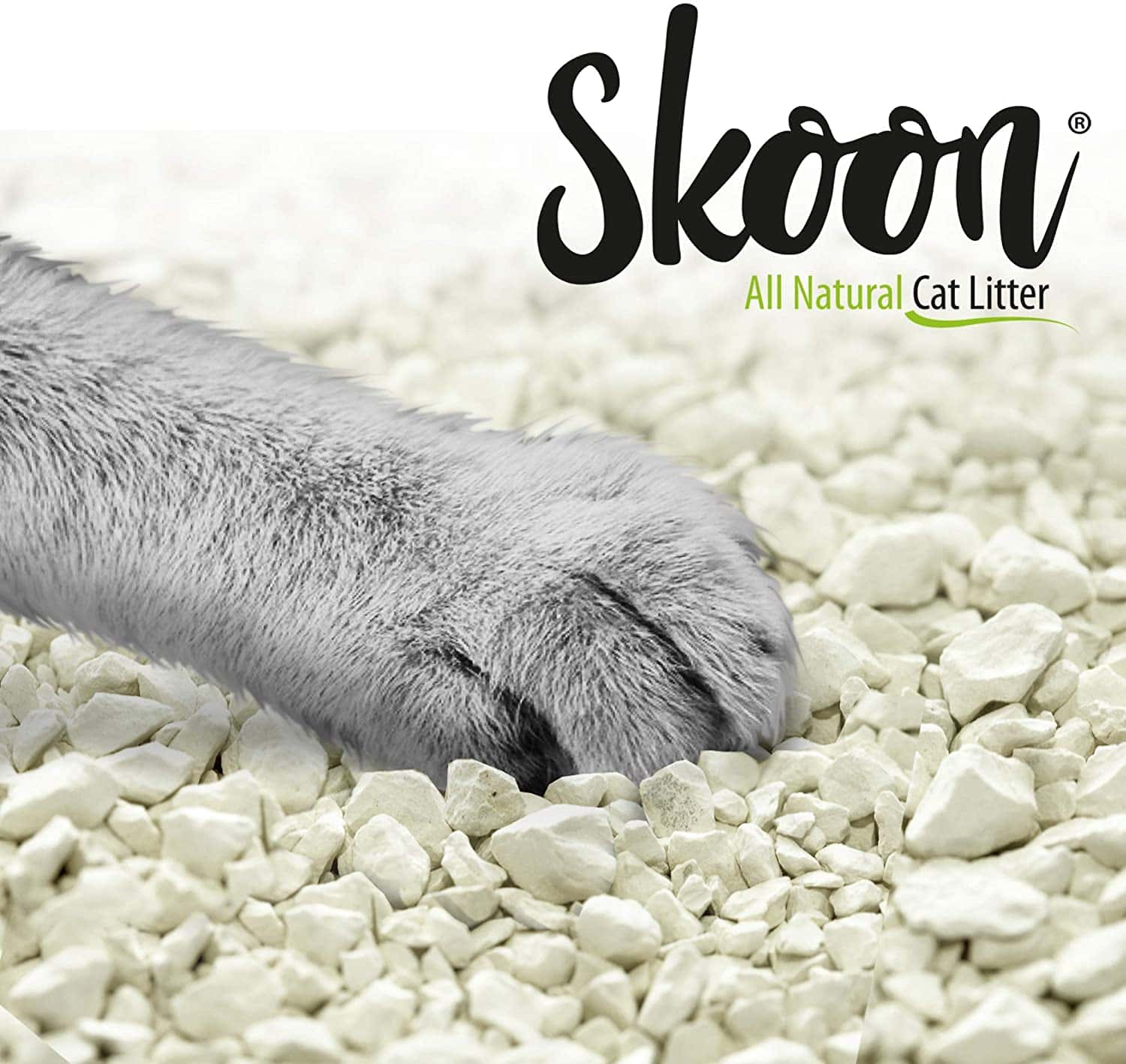
Diatomaceous earth or diatomite cat litter is another very absorbent, non-clumping litter. It also works well to trap urine and fecal odors. The downside to this type of litter is that it’s expensive, and the larger pebble sizes can be hard on some cats’ feet.
- Related Read: Ways to Keep Litter from Tracking All Over the Floor
6. Grass
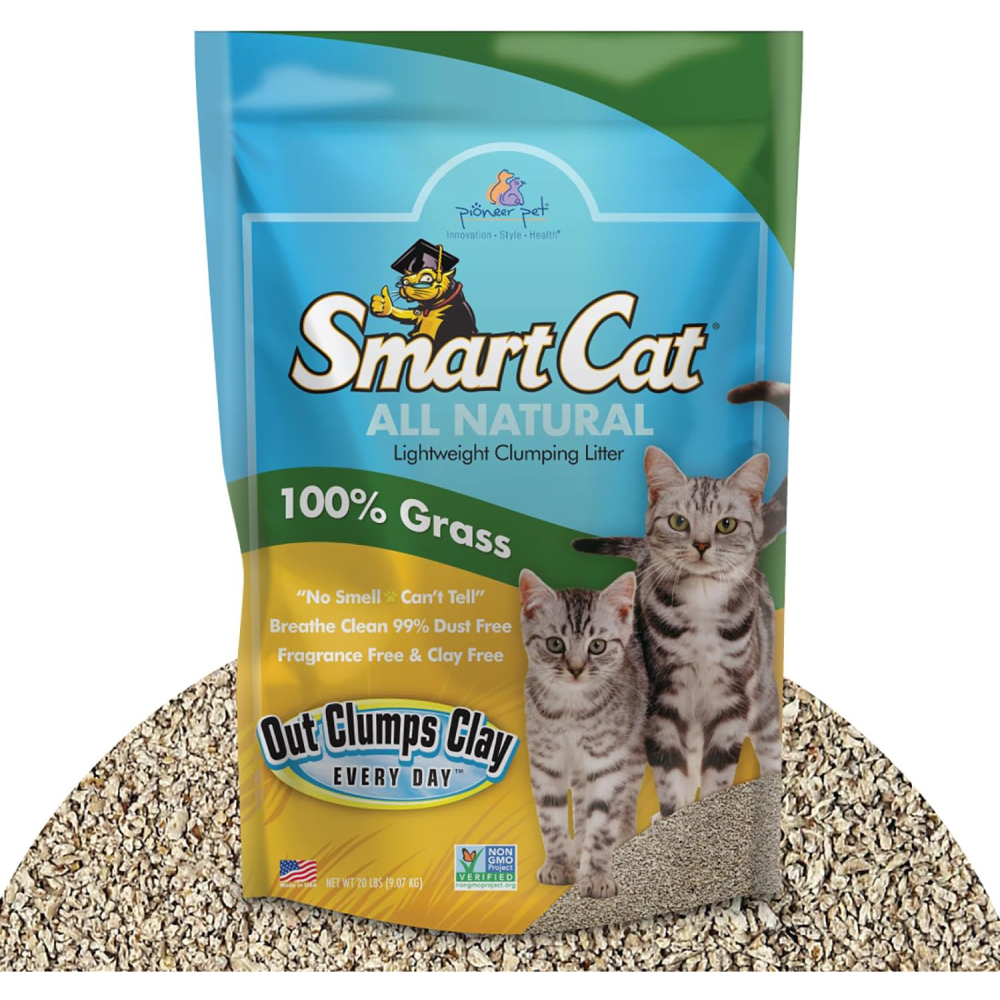
You make grass litter from grass seed, and like clay litter, you can purchase it as a clumping or non-clumping litter. It’s biodegradable so it is kinder to the environment. You can even flush some brands down the toilet. Besides being hard to find in some areas, there is no downside to using grass in your litter box.
7. Paper
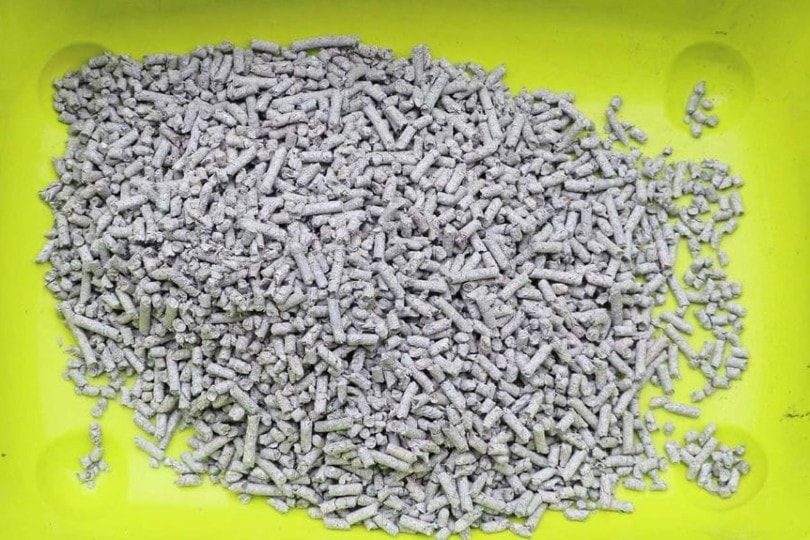
Paper litter is highly absorbent and non-clumping. Like silica gel, you need to frequently stir the litter to spread the urine evenly. We like paper litter for traveling but found it didn’t do enough to combat odors in our home to use it regularly. If you have more than one cat using the same box, the recycled paper can become a soggy mess.
8. Corn
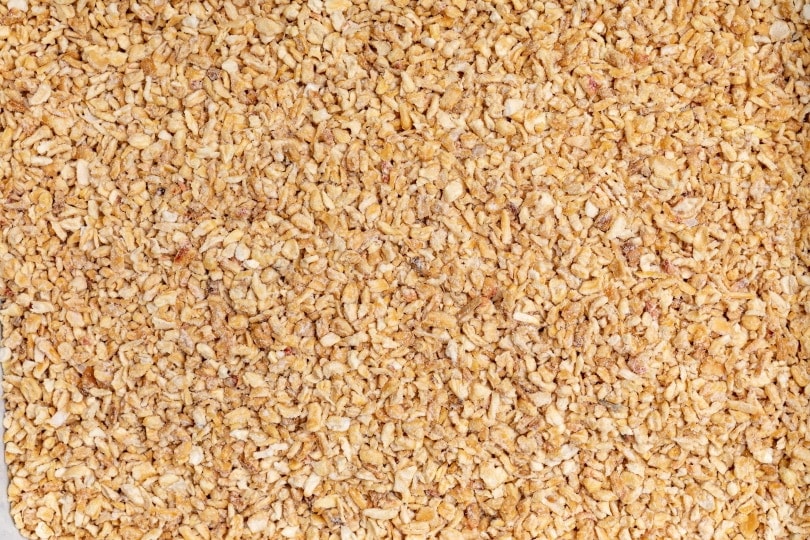
Corn is inexpensive and biodegradable, so it makes a great choice for an alternative to clay. It’s relatively lightweight and forms tight clumps that are easy to scoop out. We found that the tight clumping helped us use less litter, so it pays for itself over time. It is not a great option if you want to avoid tracking.
9. Pine Cat Litter
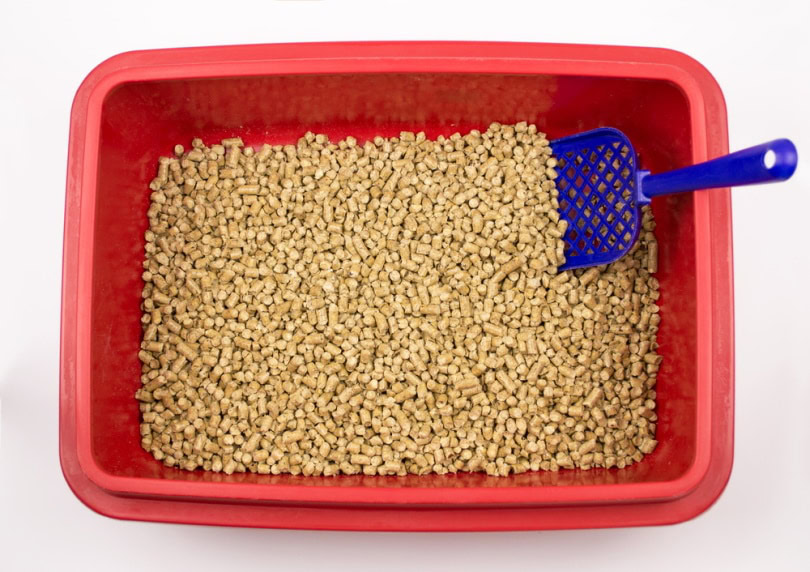
Pine litter is unique in that it has a fresh pine scent that can help mask odors and keep your home smelling fresh. Pine litter is similar to grass, and you can find it in clumping and non-clumping varieties to suit your needs. The only downside is that some people might not enjoy the smell of Christmas all year long.
Read also:
- Best Litters for Cats and Owners with Asthma – Reviews & Top Picks
- Best Places to Buy Cat Litter in the US – Reviews & Top Picks
Conclusion
Out of the several types of cat litter on our list, we like to use corn and grass the most frequently. They form tight clumps, and they are biodegradable, so it doesn’t hurt the environment to use them. Silica gel is one of the most effective non-clumping types we’ve tried, and we like to use it when we have the budget, but it is expensive compared to the others.
You May Also Like:
- How to Safely & Quickly Clean a Cat Litter Box
- Best Cat Litters: Reviews & Top Picks
- Best Sifting Cat Litter Boxes – Reviews & Top Picks
Featured Image Credit by: Lilia Solonari, Shutterstock
